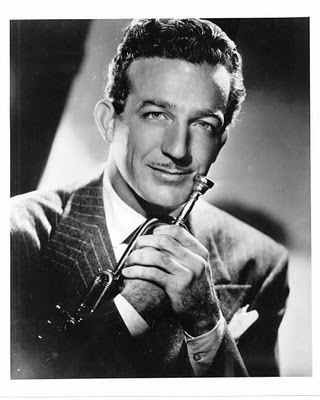Aristaeus
A-List Customer
- Messages
- 407
- Location
- Pensacola FL
Harry James

biography
by William Ruhlmann
Harry James was one of the most outstanding instrumentalists of the swing era, employing a bravura playing style that made his trumpet work instantly identifiable. He was also one of the most popular bandleaders of the first half of the 1940s, and he continued to lead his band until just before his death, 40 years later. James was the child of circus performers. His father, Everette Robert James, was the bandleader and trumpet player in the orchestra for the Mighty Haag Circus, and his mother, Maybelle Stewart Clark James, was an aerialist. Growing up in the circus, James became a performer himself as early as the age of four, when he began working as a contortionist. He soon turned to music, however, first playing the snare drum in the band from about the age of six and taking trumpet lessons from his father. At 12, he took over leadership of the second band in the Christy Brothers Circus, for which his family was then working. He attended grade school in Beaumont, Texas, where the circus spent the winter, and when he was 14 he won a state music contest as a trumpeter.
That inspired him to turn professional and begin playing in local bands. James' first job with a national band came in 1935 when he was hired by Ben Pollack. In May 1935, he married singer Louise Tobin, with whom he had two children and from whom he was divorced in June 1943. He made his first recordings as a member of the Pollack band in September 1936. Not long after, he was tapped by Benny Goodman, then leading one of the country's most popular bands, and he began working for Goodman by the end of 1936. He rapidly gained notice in the Goodman band, and by December 1937 he had begun to make recordings under his own name for Brunswick Records (later absorbed by Columbia Records).
[video=youtube;RJpeKiXfgTs]http://www.youtube.com/watch?v=RJpeKiXfgTs&list=PLDBD2A6B84F88819B&index=48&feature=plpp_video[/video]
[video=youtube;lTzP7ecGQiw]http://www.youtube.com/watch?v=lTzP7ecGQiw[/video]
[video=youtube;s03UQuHjdpg]http://www.youtube.com/watch?v=s03UQuHjdpg&list=PLDBD2A6B84F88819B&index=51&feature=plpp_video[/video]

biography
by William Ruhlmann
Harry James was one of the most outstanding instrumentalists of the swing era, employing a bravura playing style that made his trumpet work instantly identifiable. He was also one of the most popular bandleaders of the first half of the 1940s, and he continued to lead his band until just before his death, 40 years later. James was the child of circus performers. His father, Everette Robert James, was the bandleader and trumpet player in the orchestra for the Mighty Haag Circus, and his mother, Maybelle Stewart Clark James, was an aerialist. Growing up in the circus, James became a performer himself as early as the age of four, when he began working as a contortionist. He soon turned to music, however, first playing the snare drum in the band from about the age of six and taking trumpet lessons from his father. At 12, he took over leadership of the second band in the Christy Brothers Circus, for which his family was then working. He attended grade school in Beaumont, Texas, where the circus spent the winter, and when he was 14 he won a state music contest as a trumpeter.
That inspired him to turn professional and begin playing in local bands. James' first job with a national band came in 1935 when he was hired by Ben Pollack. In May 1935, he married singer Louise Tobin, with whom he had two children and from whom he was divorced in June 1943. He made his first recordings as a member of the Pollack band in September 1936. Not long after, he was tapped by Benny Goodman, then leading one of the country's most popular bands, and he began working for Goodman by the end of 1936. He rapidly gained notice in the Goodman band, and by December 1937 he had begun to make recordings under his own name for Brunswick Records (later absorbed by Columbia Records).
[video=youtube;RJpeKiXfgTs]http://www.youtube.com/watch?v=RJpeKiXfgTs&list=PLDBD2A6B84F88819B&index=48&feature=plpp_video[/video]
[video=youtube;lTzP7ecGQiw]http://www.youtube.com/watch?v=lTzP7ecGQiw[/video]
[video=youtube;s03UQuHjdpg]http://www.youtube.com/watch?v=s03UQuHjdpg&list=PLDBD2A6B84F88819B&index=51&feature=plpp_video[/video]
Last edited:


